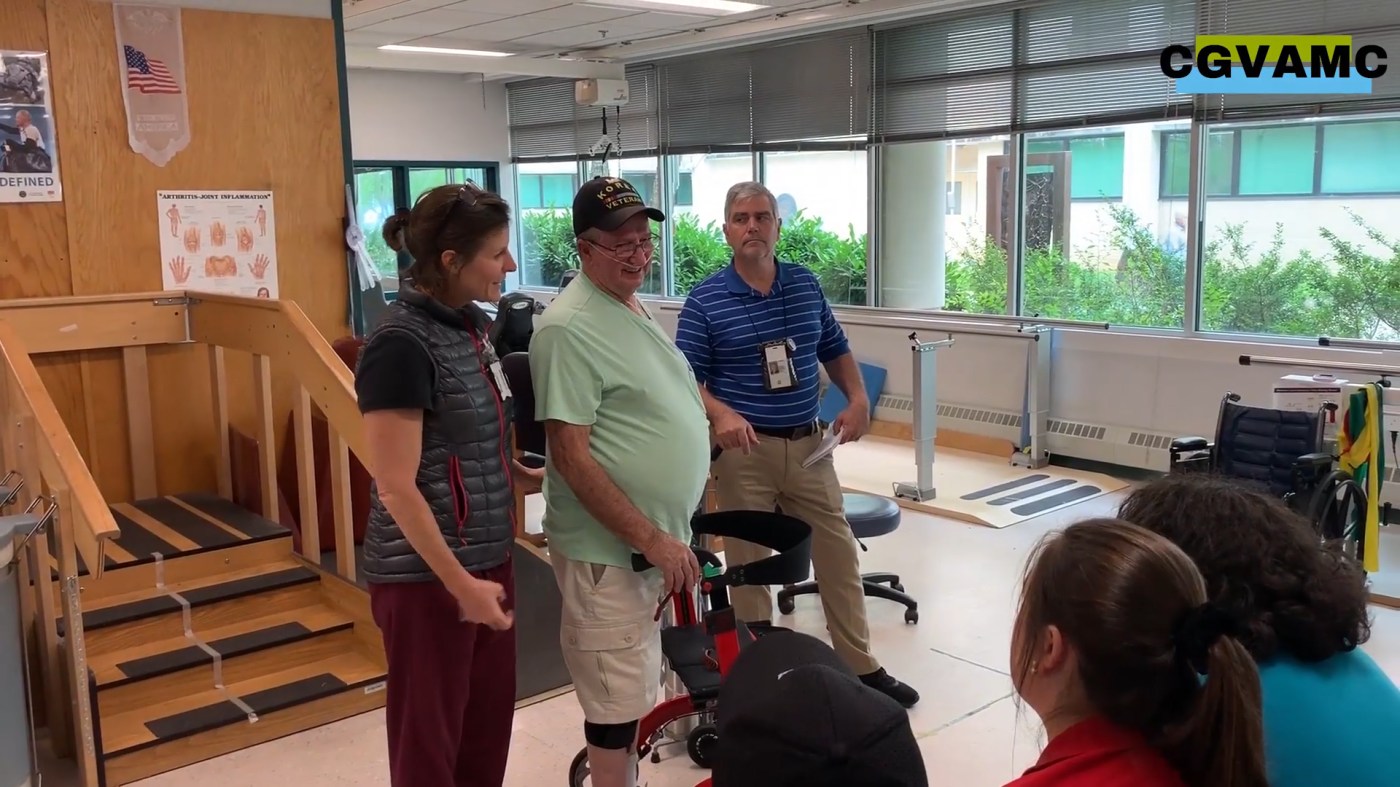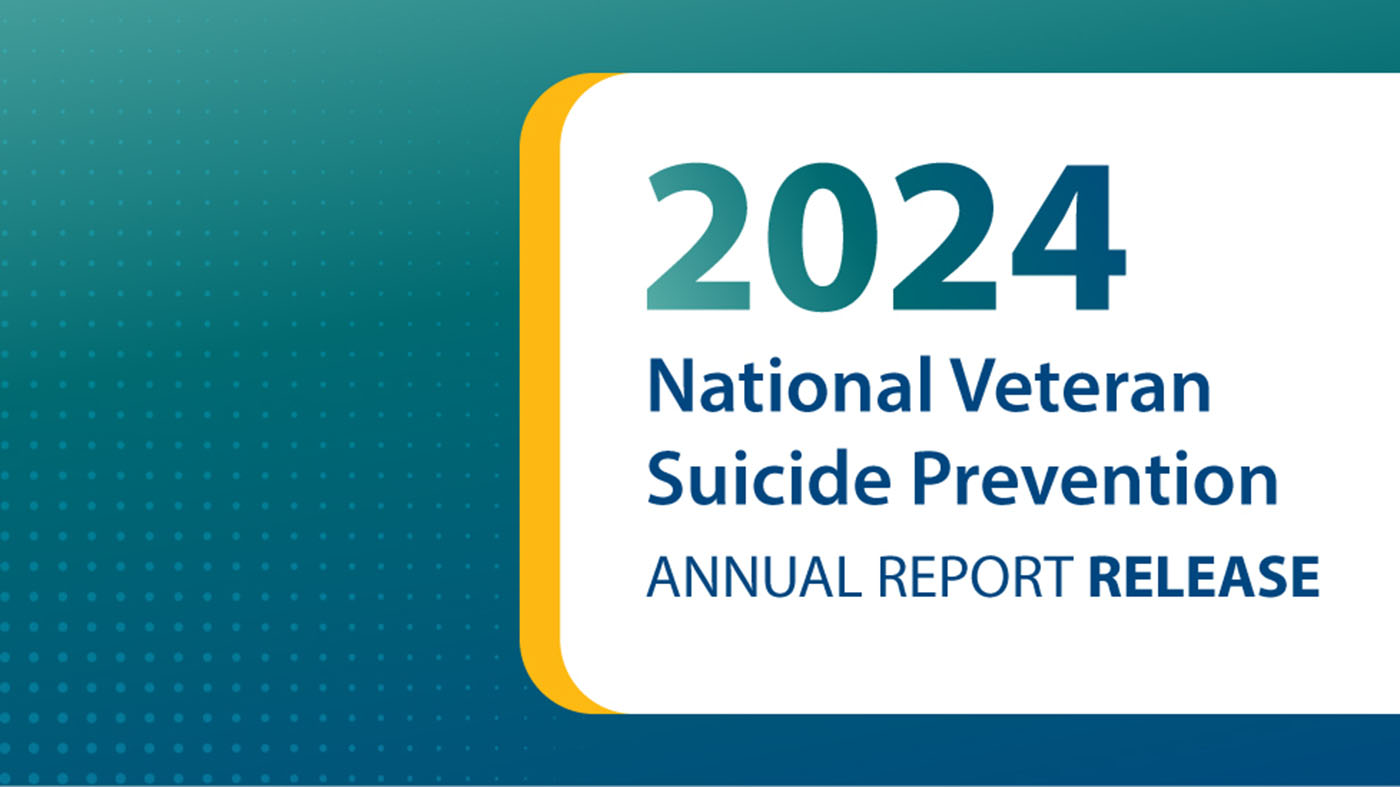The Charles George VA Medical Center is employing a life-changing prosthetic device for Veterans suffering from a variety of illnesses affecting their ability to walk. The Ness L300 Go device can improve mobility, increase safety and return independence to many Veterans.
The Ness L300 device wraps around the upper or lower leg. Once attached, it sends electrical stimulation to improve mobility for individuals with foot drop and/or thigh muscle weakness.

Clifton Helms uses his Ness L300 Foot Drop System to stimulate and strengthen his leg muscles. Helms wraps the device around his leg and wirelessly connects to a mobile app allowing him to control it and monitor his progress. Photo by Shahron James.
The device can assist people recovering from Stroke, Multiple Sclerosis, Cerebral Palsy, Traumatic Brain Injury or Incomplete Spinal Cord Injury. It has an embedded 3-axis gyroscope and accelerometer, which senses movement to apply the necessary electrical stimulation to help a user walk. Paired with a mobile app, the L300 can track usage, set goals and monitor activity to show progress.
Charles George VA Medical Center partnered with Bioness, Inc. to bring the product to Veterans. Dr. Anne Hammonds saw the potential for the device to improve life for Clifton Helms, a Korean War Veteran.
Preparation
To prepare, Helms worked with Hammonds for nearly three weeks. He stayed at the Charles George Community Living Center to determine his appropriateness for the L300 Go device. They also worked for several weeks on an outpatient basis, with the goal of increasing his safety and mobility at home.
Because of this device, Helms can remain independent and return to everyday activities like dressing himself and enjoying the hobbies he loves. Recently, while on vacation at the beach with his wife and daughter, He was able to walk in the sand barefoot and use his metal detector, activities he loves. He can do those things because of the L300 device. Other interventional aids require that he wear a shoe.
The Bioness program utilized by the Charles George VA Medical Center is designed to match the appropriate device to a suitable candidate. Dr. Hammonds employs a team to work with individuals over the course of weeks or months, assessing their capability and need.

Clifton Helms using the Ness L300 Foot Drop System. Photo by Shahron James.
Personalized treatment
The team works with the Veteran to develop a personalized treatment plan to set goals. During this training period, Hammonds checks the Veteran’s ability to safely place the device on the leg, conduct proper maintenance for continued safe use and demonstrate improved gait, increasing independence. When the Veteran shows competency with the device, it is purchased for the Veteran’s personal use.
“We got one of the best hospitals in the world, the staff are so kind and helpful,” Helms said. “I am no longer down in the dumps, I can get around and enjoy life again.”
Tara Manis-Healey, LCSW, is a Veteran Experience Officer for the Salisbury VA Health Care System. This story is the product of her detail as interim public affairs officer to the Asheville VA Medical Center.
Topics in this story
More Stories
The Medical Foster Home program offers Veterans an alternative to nursing homes.
Watch the Under Secretary for Health and a panel of experts discuss VA Health Connect tele-emergency care.
The 2024 National Veteran Suicide Prevention Annual Report provides the foundation for VA’s suicide prevention programs and initiatives.







That’s awesome.
Thank God he can walk now
My daughter have been suffering from amyotrophic laterals sclerosis (ALS) disease for the last three years and she had constant pain, especially in her knees. And then the inability to eat without getting choked, strangled, and coughing. Thank God she have finally recovered after two months of taking a medication I feel so happy and excited to see my daughter recover from ALS very fast. you can ask for the doctor if you need their help
What good news, technology at the service of the patient.